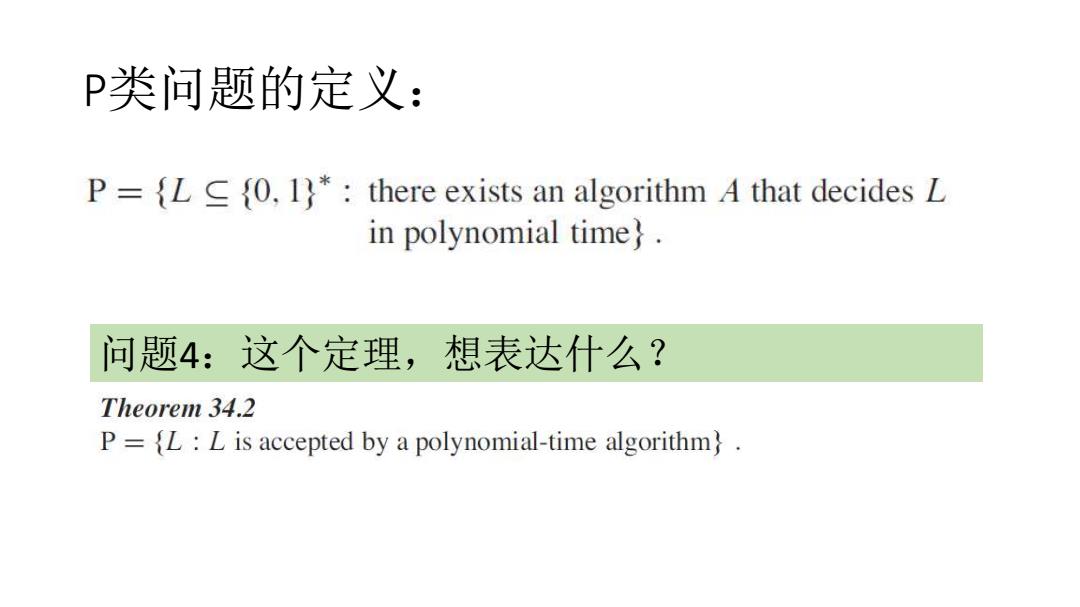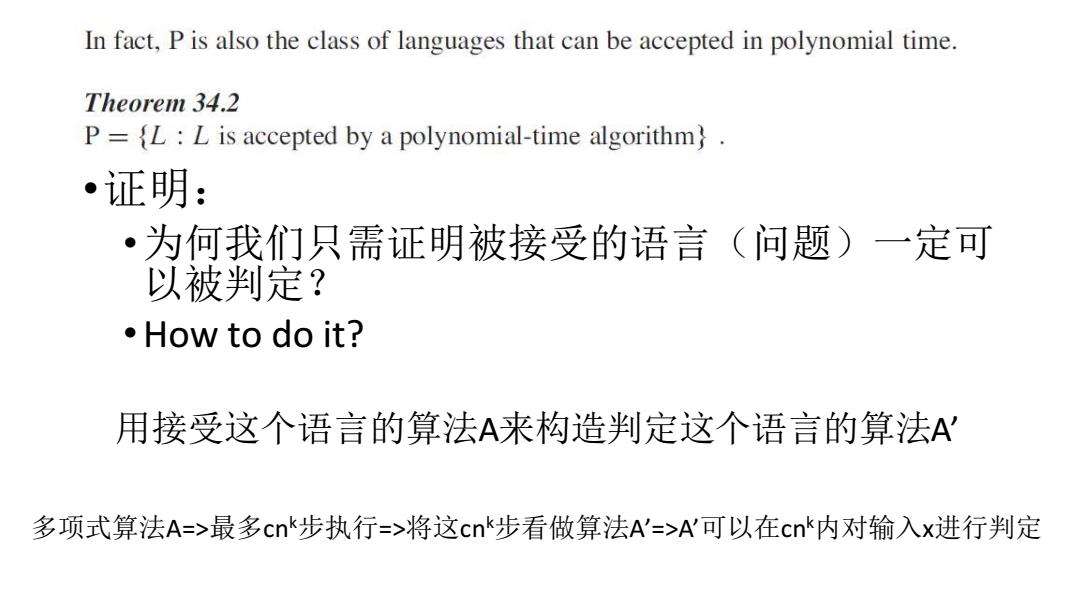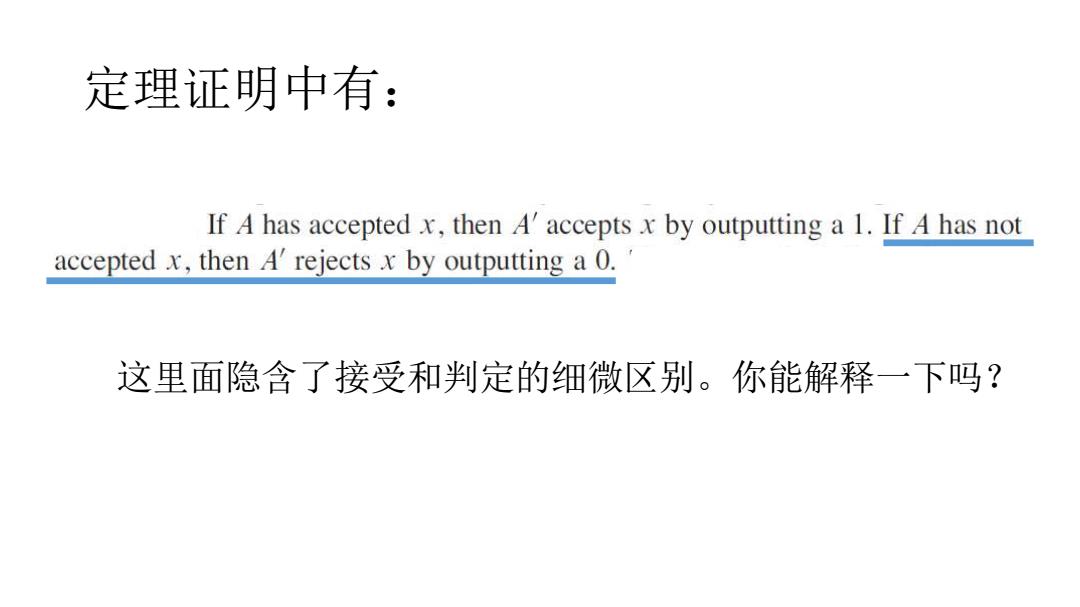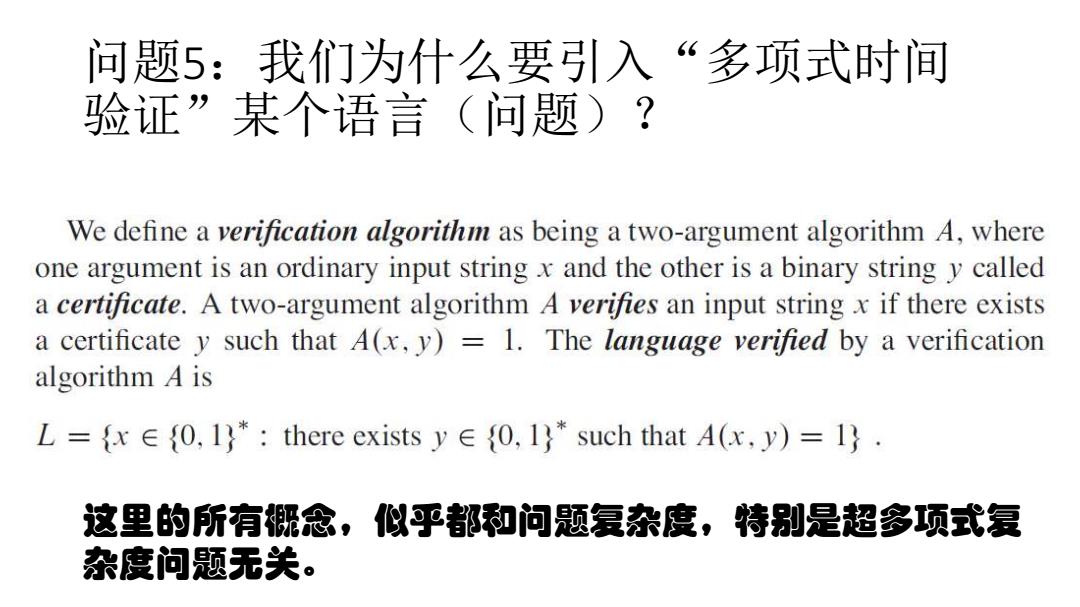
P类问题的定义: P=L 0,1*:there exists an algorithm A that decides L in polynomial time}. 问题4:这个定理,想表达什么? Theorem 34.2 P={L:L is accepted by a polynomial-time algorithm}
P类问题的定义: 问题4:这个定理,想表达什么?

In fact,P is also the class of languages that can be accepted in polynomial time. Theorem 34.2 P={L:L is accepted by a polynomial-time algorithm}. •证明: ·为何我们只需证明被接受的语言(问题)一定可 以被判定? ·How to do it? 用接受这个语言的算法A来构造判定这个语言的算法A' 多项式算法A=>最多cnk步执行=>将这cnk步看做算法A'=>A'可以在cnk内对输入x进行判定
•证明: •为何我们只需证明被接受的语言(问题)一定可 以被判定? •How to do it? 用接受这个语言的算法A来构造判定这个语言的算法A’ 多项式算法A=>最多cnk步执行=>将这cnk步看做算法A’=>A’可以在cnk内对输入x进行判定

定理证明中有: If A has accepted x,then A'accepts x by outputting a 1.If A has not accepted x,then A'rejects x by outputting a 0. 这里面隐含了接受和判定的细微区别。你能解释一下吗?
定理证明中有: 这里面隐含了接受和判定的细微区别。你能解释一下吗?

问题5:我们为什么要引入“多项式时间 验证”某个语言(问题)? We define a verification algorithm as being a two-argument algorithm A,where one argument is an ordinary input string x and the other is a binary string y called a certificate.A two-argument algorithm A verifies an input string x if there exists a certificate y such that A(x,y)=1.The language verified by a verification algorithm A is L={x∈{0,l1}*:there exists y∈0,l}*such that A(x,y)=}· 这里的所有概念,似乎都和问题复杂度,特别是超多项式复 杂度问题无关
问题5:我们为什么要引入“多项式时间 验证”某个语言(问题)? 这里的所有概念,似乎都和问题复杂度,特别是超多项式复 杂度问题无关